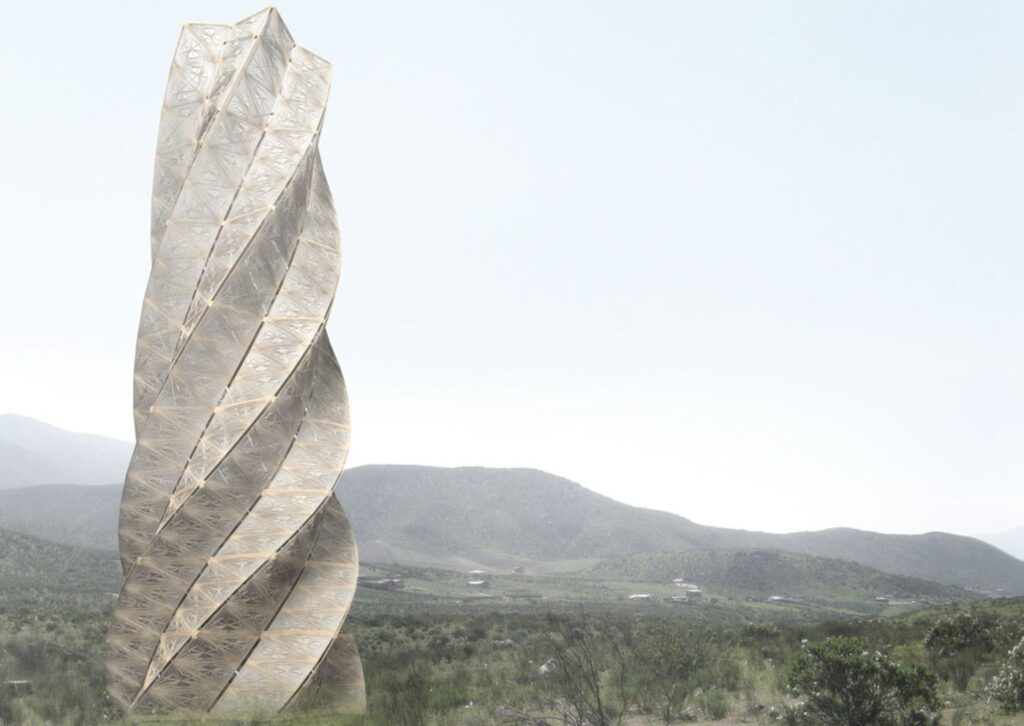
How can a megacity find water for 10 million people if it exists in the desert? Fog-catching nets, erected on hills over the city of Lima could solve the city’s water shortages for good.
A twenty-meter high (60 feet) tower of spiraling nets will be unveiled this summer in the city as a solution to the threat which a warming climate poses to the shaky foundations of water availability in Lima.
Aside from glacial runoff from the Andes, and water from the stressed Rímac River, Peru’s capital city accumulates just one inch of rain a year. The city sees high annual temperatures, and water consumption rates, despite being located in a desert, are higher than world averages.
However, a unique feature of Lima’s weather offers a way of relieving some of this demand. Situated on the coast, Lima’s surrounding hills are constantly bathed in waves of fog coming off the Pacific Ocean, and the moisture captured by plants ensures they stay green year-round.
Inspired by rudimentary, two-dimensional fog nets installed by rural communities across the continent, Alberto Fernandez, a Chilean designer currently studying for a Ph.D. from University College London, wanted to extrapolate the technology to its most sophisticated conclusion, because while the nets had major flaws, their basic principles were brilliant.
The towers and fog-catching nets unveiled by Fernandez are made of aluminum wrapped in copper mesh covered in plastic, and could create as much as 1,000 liters of water per day, amounting to 3.6 million liters per year, if enough are installed.
RELATED: New Device Can Power 100 Small LED Lights Simply By Harnessing the Energy of a Single Water Droplet
Their towering structure allows them to get into the clouds, collecting more vital water vapor, and their spiral shape means that no matter the direction of the wind, the moisture-rich fog will strike some part of the structure directly.
The water will largely be used for agriculture—as the water would require filtering before consumption—helping free up resources for city-dwellers.
Cheaper than seawater desalination or filtering water from the Rímac, the towers and nets, which Fernandez says could be built up to 200 meters high, are part of a myriad of designs for the Lima 2035 project.
MORE: Solar-Powered Panels Pull Water Out of the Air For Navajo Families Who Have None
It aims at reversing current desertification trends to create a re-generative oasis for sustainable and human-centered food systems that promote healthy diets and improved incomes in the driest megacity on Earth.
(WATCH the video about fog-catching towers below.)
SHARE This Exciting Innovation With Friends on Social Media…




















